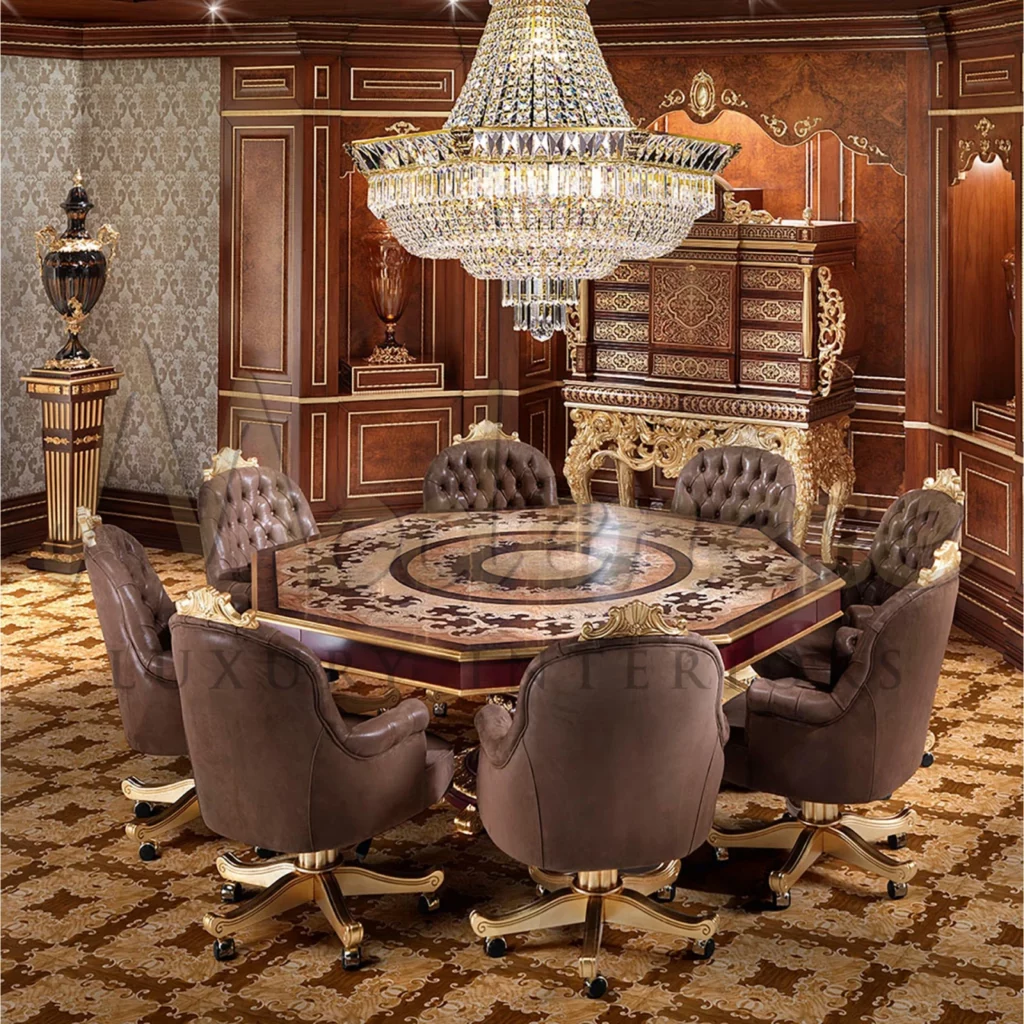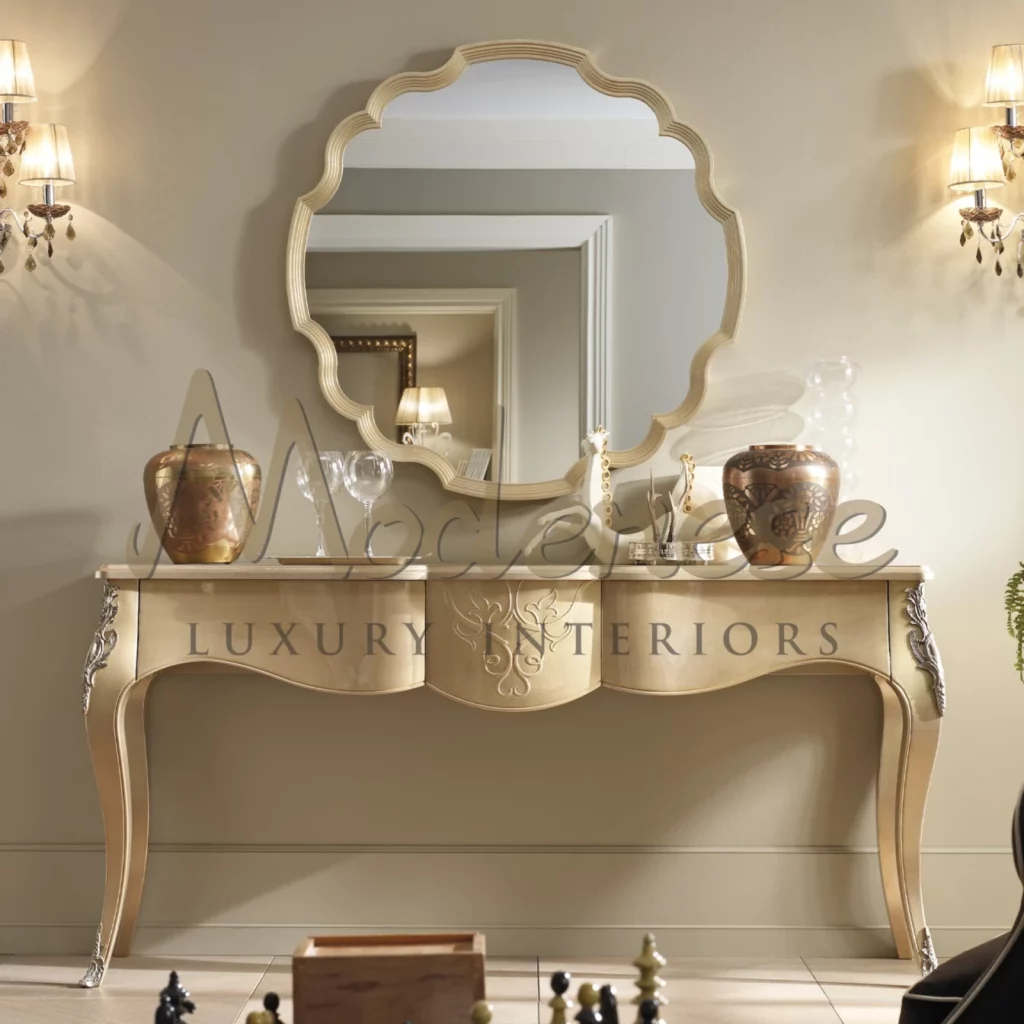The timeless appeal of classic Italian furniture has captivated design enthusiasts for centuries. Renowned manufacturers like Modenese Furniture have kept this legacy alive, perfecting the art of traditional craftsmanship while embracing contemporary needs. Today, as modern minimalism dominates interior design trends, there’s a growing appreciation for blending traditional Italian craftsmanship with contemporary aesthetics. This fusion creates spaces that are both sophisticated and livable, combining the ornate beauty of classical pieces with the clean lines of modern design.

Understanding the Essence of Classic Italian Furniture
Classic Italian furniture is characterized by its exceptional craftsmanship, luxurious materials, and intricate details. Historically, these pieces were created for noble families and aristocrats, featuring elaborate wood carvings, gilt accents, and rich upholstery. Key characteristics include:
- Hand-carved wooden frames with ornate details
- Premium materials like walnut, cherry, and mahogany
- Rich fabrics including silk, velvet, and damascus
- Sophisticated finishing techniques such as gold leafing
- Curved lines and symmetrical patterns
Color Schemes: Creating Harmony Between Old and New
The key to successfully integrating classic Italian pieces into modern spaces lies in thoughtful color coordination. Traditional Italian furniture often features deep, rich tones that can be balanced with contemporary neutral palettes. Consider these proven color combinations:
| Classic Element | Modern Complement | Accent Color |
|---|---|---|
| Dark Walnut Wood | Warm Grey | Navy Blue |
| Gold Gilt | Crisp White | Emerald Green |
| Burgundy Upholstery | Greige | Antique Gold |
| Cherry Wood | Light Taupe | Deep Purple |
Strategic Space Planning
Effective space planning is crucial when incorporating substantial classic pieces into modern interiors. The goal is to create balanced compositions that prevent the space from feeling overwhelmed by ornate elements. Professional designers recommend allocating 60% of the space to modern elements and 40% to classic pieces for optimal visual balance.
Room-by-Room Integration Guidelines
Different rooms require different approaches to furniture integration. Here’s a comprehensive breakdown of effective strategies for each space:
Living Room
Position a classic Italian sofa as the focal point, balanced by modern side tables and lighting fixtures. Allow at least 30 inches of walking space around large pieces to maintain flow. Modern artwork can create an interesting dialogue with traditional furniture, while contemporary rugs help ground the space.
Dining Room
A traditional Italian dining table can be paired with modern chairs for an eclectic look. Maintain at least 48 inches between the table edge and walls to ensure comfortable circulation. Modern pendant lighting can add contemporary flair while highlighting the table’s craftsmanship.
Bedroom
An ornate Italian bed frame can serve as a stunning centerpiece when balanced with simple, modern nightstands and minimal decor. Keep at least 36 inches of clearance on three sides of the bed for easy movement and visual breathing space.
Statement Pieces: Making the Right Choice
When selecting classic Italian statement pieces, consider these essential factors:
- Scale and Proportion
- Measure ceiling height and room dimensions carefully
- Allow for proper spacing around large pieces
- Consider the visual weight of ornate details
- Functionality
- Ensure pieces serve a practical purpose
- Consider modern lifestyle needs
- Verify durability and maintenance requirements
- Authentication
- Verify the piece’s origin and craftsmanship
- Check for authentic materials and techniques
- Document restoration history if applicable
Practical Maintenance Tips
Preserving the beauty of classic Italian furniture requires proper care. Modern homes often have different environmental conditions than the palazzos these pieces were originally designed for. Implement these maintenance practices:
- Control room humidity between 45-55% to prevent wood damage
- Use UV-filtering window treatments to protect fabrics and finishes
- Dust weekly with soft, lint-free cloths
- Apply quality wood polish quarterly
- Schedule professional cleaning annually for upholstered pieces
Creating Your Legacy Space
The integration of classic Italian furniture into modern homes is more than a design choice—it’s an investment in timeless elegance. By thoughtfully combining traditional craftsmanship with contemporary design principles, you create spaces that tell a story of both heritage and innovation. These carefully curated rooms become more than just living spaces; they become personal galleries where every piece contributes to a larger narrative of style, history, and sophisticated living.
Remember that successful integration is an iterative process. Start with one significant piece and build around it gradually, allowing your space to evolve organically. This approach ensures that each addition contributes meaningfully to your home’s aesthetic while maintaining the delicate balance between classic grandeur and modern simplicity.

